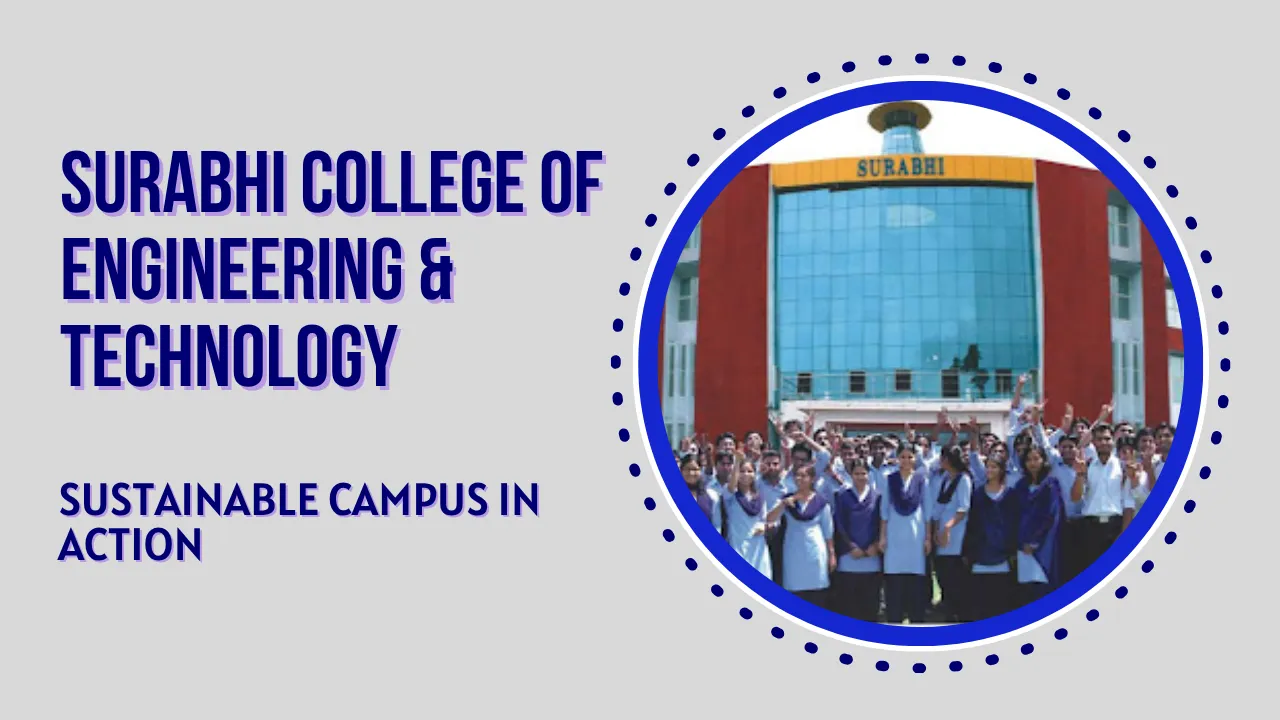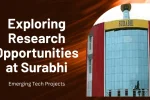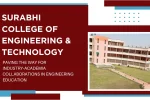Surabhi College of Engineering & Technology: Surabhi College of Engineering & Technology has emerged as a role model for eco-friendly education. At the heart of this campus lies a deep commitment to sustainable living, from solar energy panels to comprehensive recycling. The college doesn’t just teach environmental science—they live it, everyday.
This feature article dives into the innovative, ground-up efforts of Surabhi College of Engineering & Technology, showcasing how a modern engineering school can foster green engineering, water conservation, waste management, and community engagement. Discover how students and faculty team up to create measurable results and inspire broader change.
Surabhi College of Engineering & Technology: Sustainable Campus in Action
Nestled in green fields and bustling labs, Surabhi College of Engineering & Technology seamlessly blends engineering education with sustainability. Solar power harvests clean energy, rainwater harvesting meets water conservation goals, and urban gardening zones enhance biodiversity. The campus is a living lab—engineering students analyze solar panel output, optimize compost systems, and innovate in smart irrigation. A unified strategy covering green building, waste reduction, local sourcing, and eco-awareness ensures students leave not just with diplomas, but with real-world sustainability leadership skills.
Overview of Key Eco Initiatives
| Initiative | Description |
| Rooftop Solar Power | Campus-wide solar arrays provide renewable electricity and facilitate student-led performance monitoring. |
| Rainwater Harvesting | Tanks collect runoff; low-flow and sensor taps cut freshwater usage substantially. |
| Waste Segregation & Composting | Dedicated bins and compost units transform organic waste into fertilizer for campus gardens. |
| Energy-Efficient Infrastructure | LED lighting, occupancy sensors, and reflective roofing help minimize energy use. |
| Green Zones & Biodiversity | Native trees, greenhouse learning labs, and hydroponics projects enrich campus ecology. |
| Eco Transport | Bicycle lanes, hybrid shuttles, and safe walking paths promote low-carbon travel. |
| Student-Led Green Clubs | Clubs host workshops, sustainability challenges, and green-tech innovation projects. |
| Eco Cafeteria & Local Sourcing | Biodegradable tableware and seasonal produce reduce waste and carbon footprint. |
| Monitoring & Reporting | A live dashboard and annual green audit ensure continuous improvement. |
| Community Outreach | Eco-workshops and solar lamp projects extend impact to local schools and villages. |
Campus Solar Power for Renewable Energy
From day one, Surabhi College of Engineering & Technology has harnessed the sun. Classroom roofs and parking shades host photovoltaic panels that power labs and dormitories. Its rooftop solar system connects to an in-house monitoring dashboard—engineering students monitor panel efficiency in real time for coursework on renewable systems. By reducing reliance on grid electricity, the college achieves sizable carbon footprint reduction while enriching student learning through solar energy engineering.
Rainwater Harvesting and Water Conservation
Rain doesn’t go to waste here. A vast rainwater harvesting network funnels rooftop runoff into storage tanks. This water feeds bathrooms, purification systems, and greenhouses. Sensor-activated taps and low-flow valves further support water conservation. Students conduct quarterly audits to track liters saved, charting steady improvement—using engineering analysis to refine valve designs and tank capacities.
Waste Management Through Recycling and Composting
Waste segregation is taken seriously. Bins for paper, plastic, glass, metal, and organics line every corridor. Organic scraps from labs and the cafeteria move into campus compost units. The resulting nutrient-rich soil nourishes vegetable plots and flowering beds. Electronic waste, like batteries and components, is handled responsibly through licensed recyclers. Frequent recycling drives turn waste management into engaging student events, complete with poster campaigns and sustainability workshops.
Energy-Efficient Buildings and Smart Classrooms
Campus architecture supports green engineering. Wide windows channel daylight deep into interiors. White reflective rooftops reduce cooling needs. LED lighting dominates, and motion sensors switch off lights in empty rooms. Smart thermostats balance comfort and energy efficiency. The result is lower power bills and fewer carbon emissions—an efficient blueprint for green building in educational infrastructure.
Green Thumbs: Campus Gardens & Biodiversity
The grounds are alive with native trees—neem, gulmohar, and fruit species. Students champion planting events that add trees and shrubs annually. A greenhouse hybridizes hydroponic and traditional agriculture, enabling experiments in sustainable food systems. These living labs help students explore urban farming, plant biodiversity, and food security—all within easy walking distance of engineering classrooms.
Bicycle-Friendly Campus and Green Transport
Pedestrian-friendly pathways crisscross the campus. A fleet of eco-shuttle buses runs on hybrid diesel-electric engines. Onsite bike rentals and secure parking encourage pedal power. Together, these measures reduce vehicular emissions and emphasize healthy, active lifestyles. Workshops on road safety and bicycle maintenance are regular features, reinforcing responsible, sustainable travel habits.
Student-Led Green Clubs and Awareness Campaigns
The Eco Knights, Green Engineers, and Surabhi Sustainability Society lead the charge on student-driven change. These clubs organize clean-up days, speaker events, film festivals, and green invention contests. Their big annual “Greenathon” sees teams design solar cookers, smart irrigation devices, or waste-to-energy prototypes. These hands-on challenges sharpen students’ green innovation skills and foster a sense of ownership over campus sustainability.
Smart Labs and Sustainable Research Projects
Cutting-edge research happens here. Students collaborate with faculty on projects like compact water purifiers, bio-composting reactors, and micro-irrigation kits for farms. Labs showcase weather sensors, IoT-informed climate monitoring systems, and low-cost air quality monitors. This research not only boosts technical expertise but fuels local rural outreach—bridging classroom theory and community benefit.
Eco-Friendly Dining and Local Food sourcing
The cafeteria champions eco-eating. A rotating seasonal menu features produce from nearby farms and the campus greenhouse. Plates and cups are biodegradable. Pre-consumer food waste goes into compost bins—and leftovers are composted, too. This cyclical dining model supports both environmental stewardship and wellness.
Green Certifications and Collaborations
The college proudly holds ISO 14001 certification and seeks partnerships with TERI, local NGOs, and the National Green Tribunal. These collaborations bring industry expertise onto campus and enable joint programs in environmental science and policy. New academic blocks are targeting green building ratings in line with IGBC standards, reinforcing the campus’s ongoing green credentials.
Monitoring, Reporting, and Continuous Improvement
A digital green dashboard monitors metrics like energy output, water saved, and compost generated. Results appear in quarterly reports shared with faculty and students. Annual “Green Action Reports” outline next-step targets, such as increasing solar capacity or improving waste-to-energy conversion. This commitment to transparency builds trust and engages all campus stakeholders in sustainability goals.
Community Outreach and Education
Surabhi College of Engineering & Technology extends its green reach beyond campus gates. Students lead solar-lamp workshops in nearby villages, organize tree-planting campaigns in schools, and install clean-water systems in rural areas. Such outreach not only amplifies eco-awareness—it nurtures empathetic engineers poised to innovate for society’s benefit.
FAQs
1. How does the campus generate renewable energy?
It uses rooftop solar panels, monitored by students in real-time. The system helps power labs and dorms, reducing grid dependency and cutting emissions.
2. What measures conserve water on campus?
Rainwater is collected in large tanks and reused for toilets and greenery. Low-flow and sensor taps further reduce consumption.
3. How is waste managed sustainably?
Bins separate recyclables and organics. Composting transforms food scraps into fertilizer. E-waste is processed through certified recyclers.
4. How are students involved in sustainability?
Student clubs organize green workshops, sustainability competitions, and research projects on solar, composting, and water systems.
5. In what ways does the campus serve the community?
It hosts eco-workshops, solar lamp programs, and clean-water installations in nearby villages, promoting green education beyond campus boundaries.
Final Thought
Surabhi College of Engineering & Technology’s eco-friendly initiatives prove that sustainable campuses are possible—and impactful. By integrating solar energy, water savings, waste reduction, biodiverse landscaping, green transport, and community engagement, the college shapes responsible engineers and innovators. We hope this feature inspires students, educators, and institutions to build greener futures. Let us know which initiative impressed you most—or suggest your own! Share this article, and explore even more on campus sustainability, solar energy projects, and student-led green innovation.






